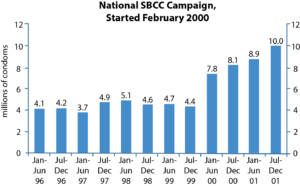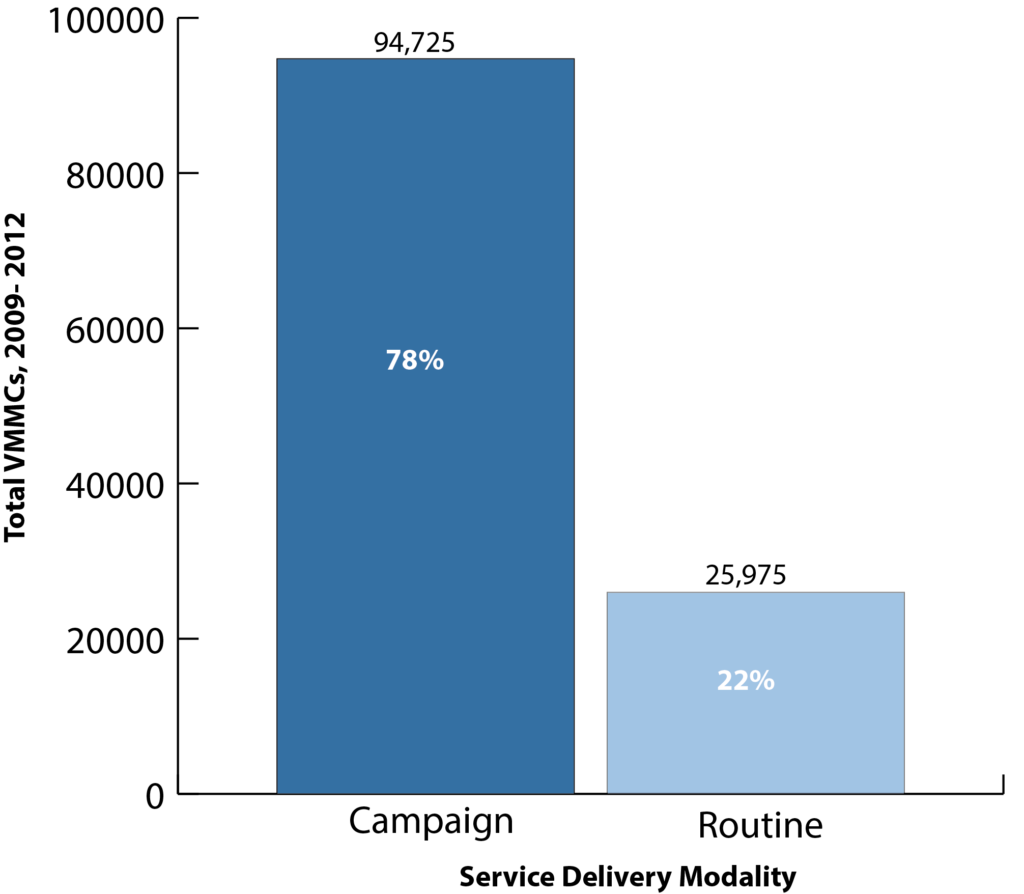Service communication has also been successfully used to increase condom sales and use. For example, in 2000 a multichannel SBCC campaign was implemented in Ghana involving mass media and community level approaches, integrating advocacy with leaders. Right after the campaign was implemented there was a 3.2 million increase in condom sales, and sales continued to rise at an average rate of 1.2 million per year.

HIV prevention programs providing voluntary medical male circumcision (VMMC) have sought to coordinate demand creation and service delivery. Communication has increased awareness of services and addressed barriers linked to fear of pain, misinformation, and social norms.
Communication has also reinforced good post-operative behavior (short-term abstinence, wound care, and issues tied to gender and sexual relations). Between 2009 and 2012, demand creation campaigns for VMMC in Iringa, Tanzania, resulted in a considerable increase in services uptake, compared with non-campaign periods. Complete case study.

Source: Kanagat, Natasha, Amelia Rock, Hally Mahler, Karin Hatzold, C. Sophia Magalona, and Tigistu Adamu. 2013. Matching Demand with Supply: Scaling Up Voluntary Medical Male Circumcision in Tanzania and Zimbabwe. Case Study Series. Arlington, VA: USAID’s AIDS Support and Technical Assistance Resources, AIDSTAR-One, Task Order 1, and MCHIP-Maternal and Child Health Integrated Program.
For additional HIV-related evidence on the impact of integrating SBCC and health services, see the following resources:

